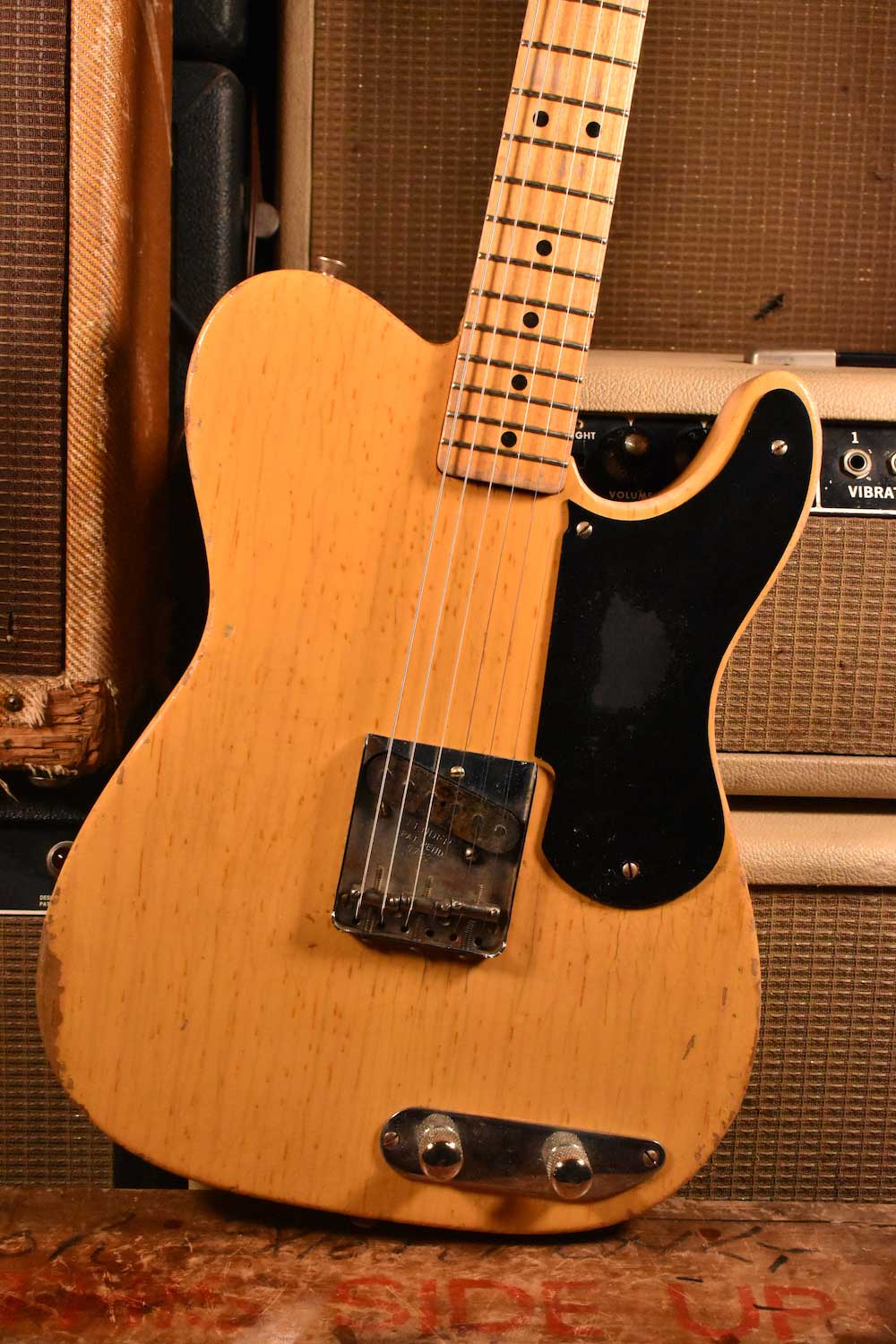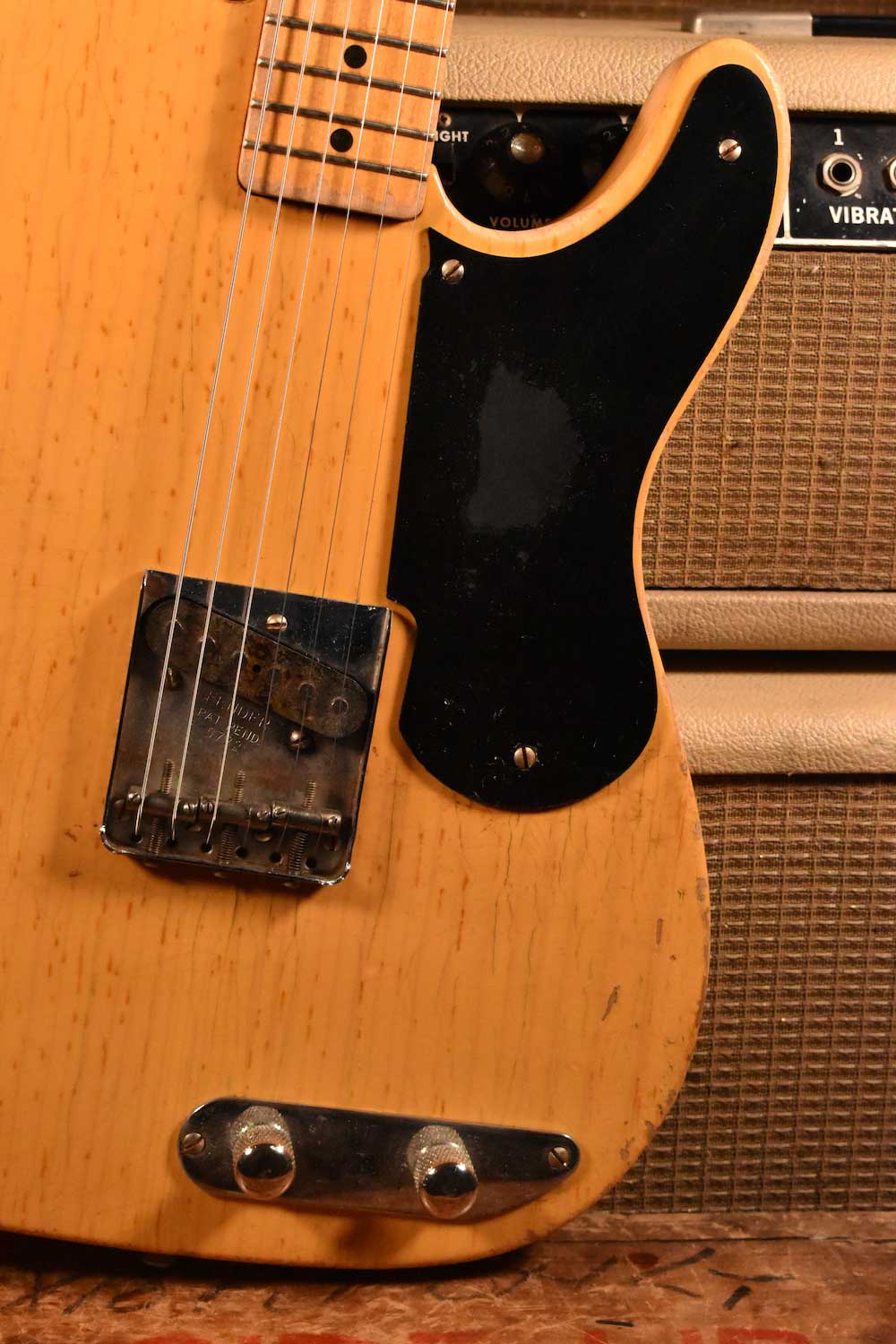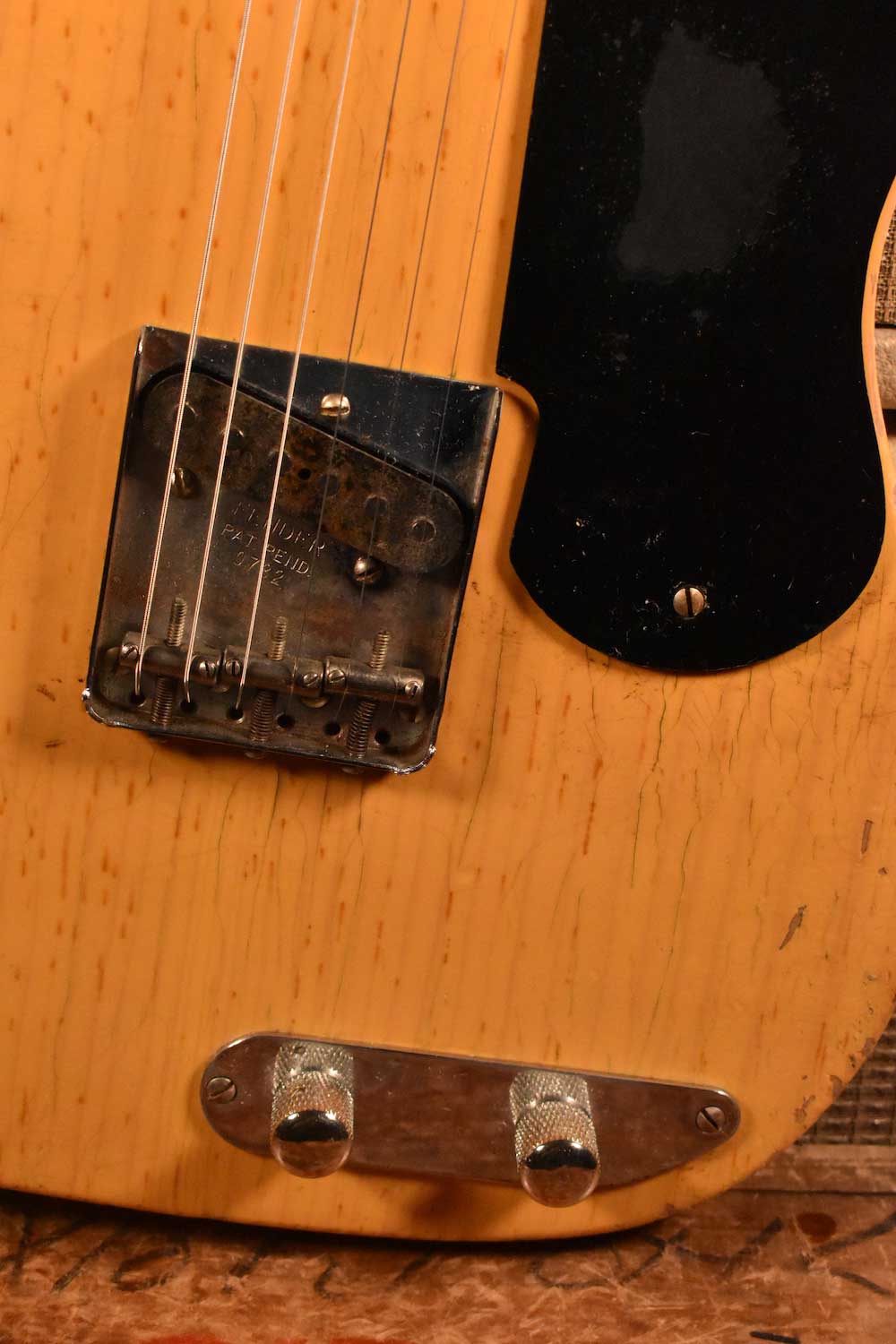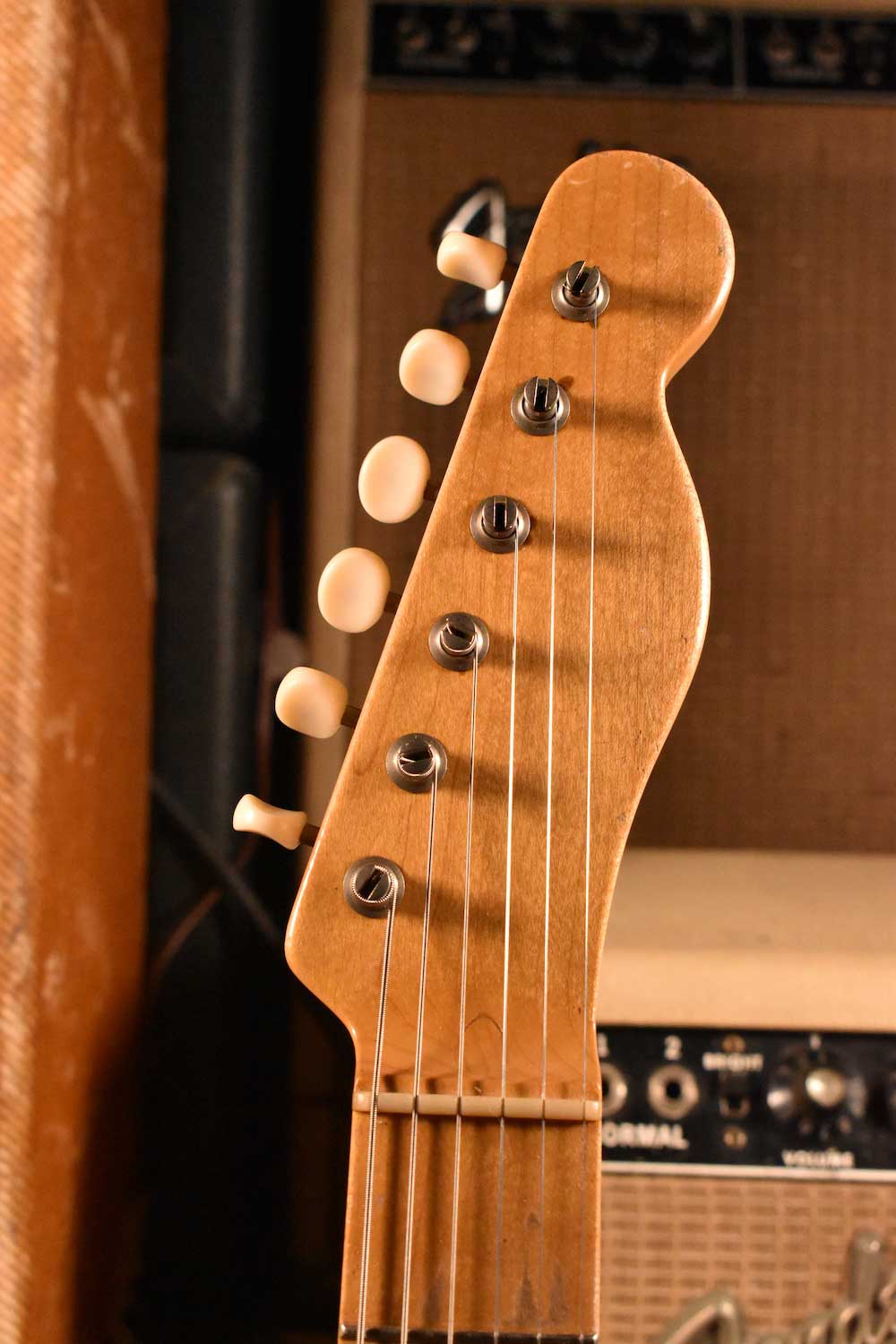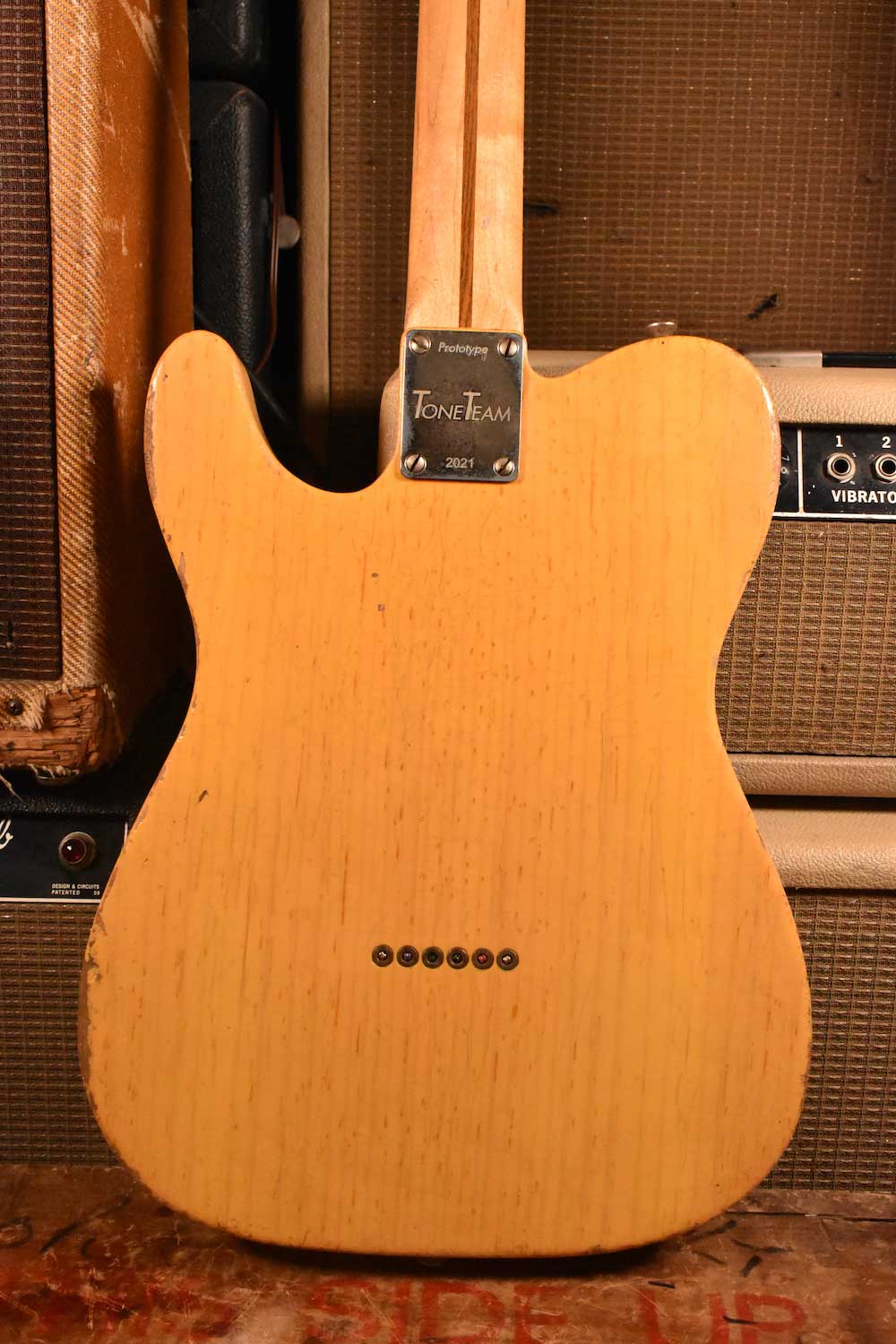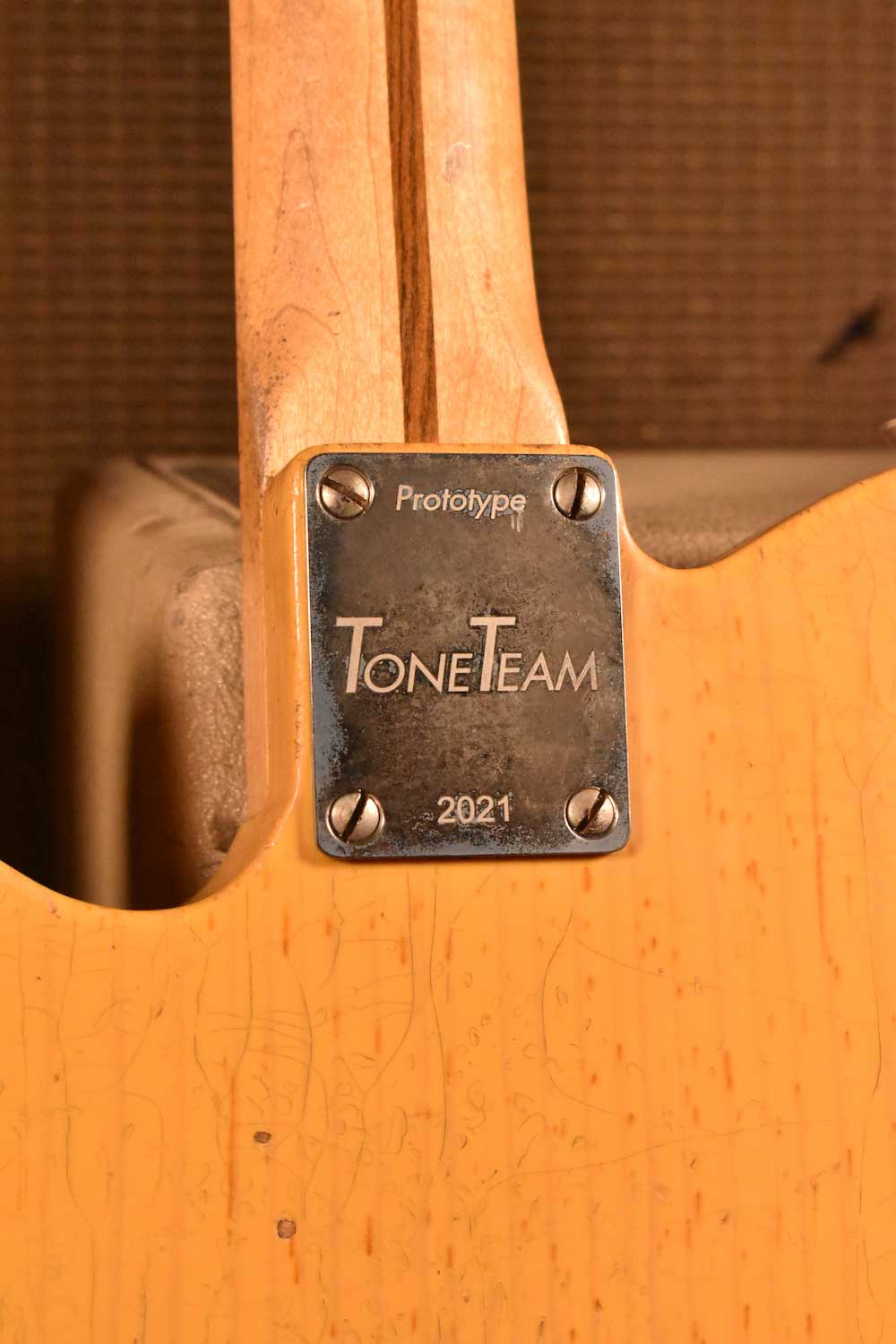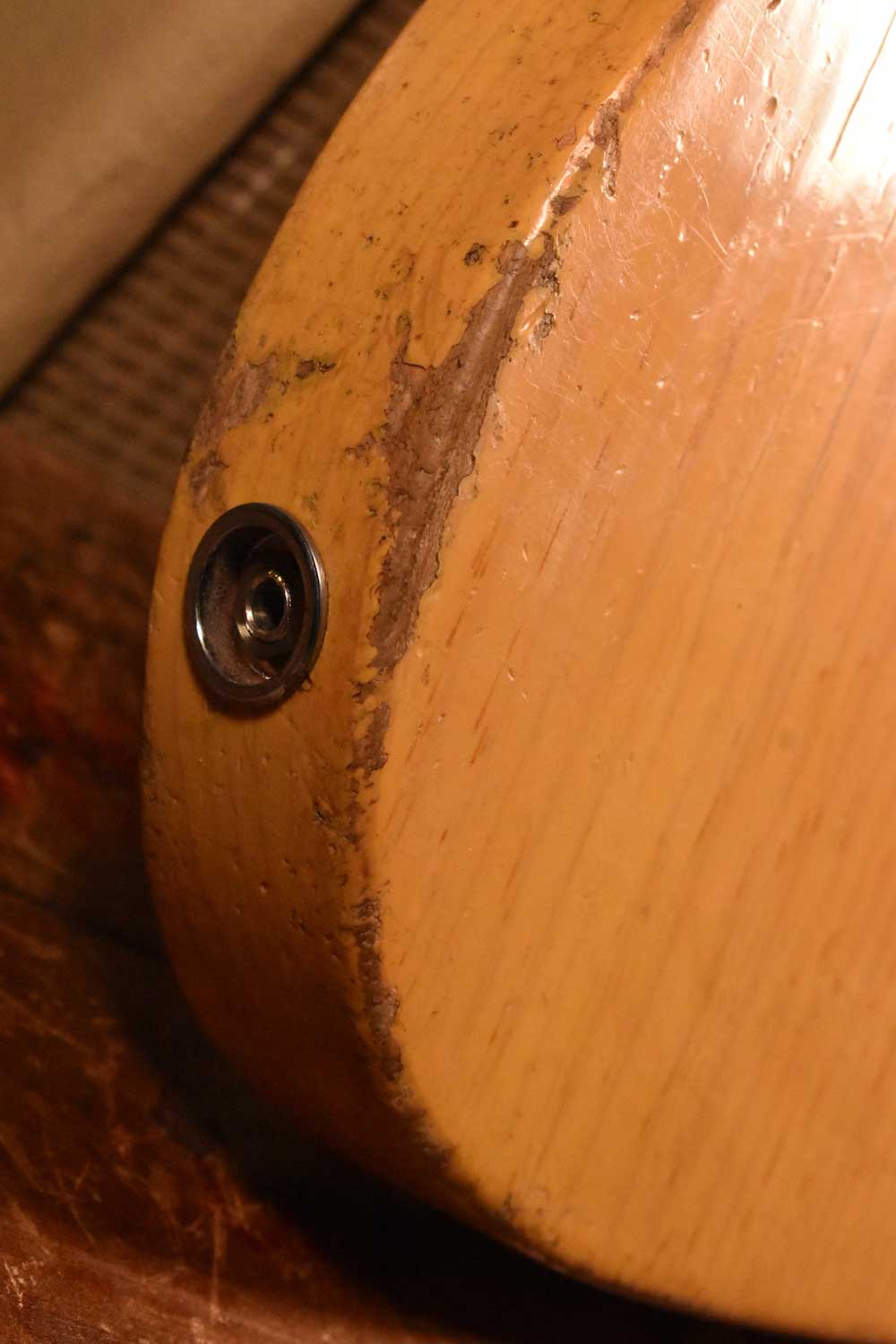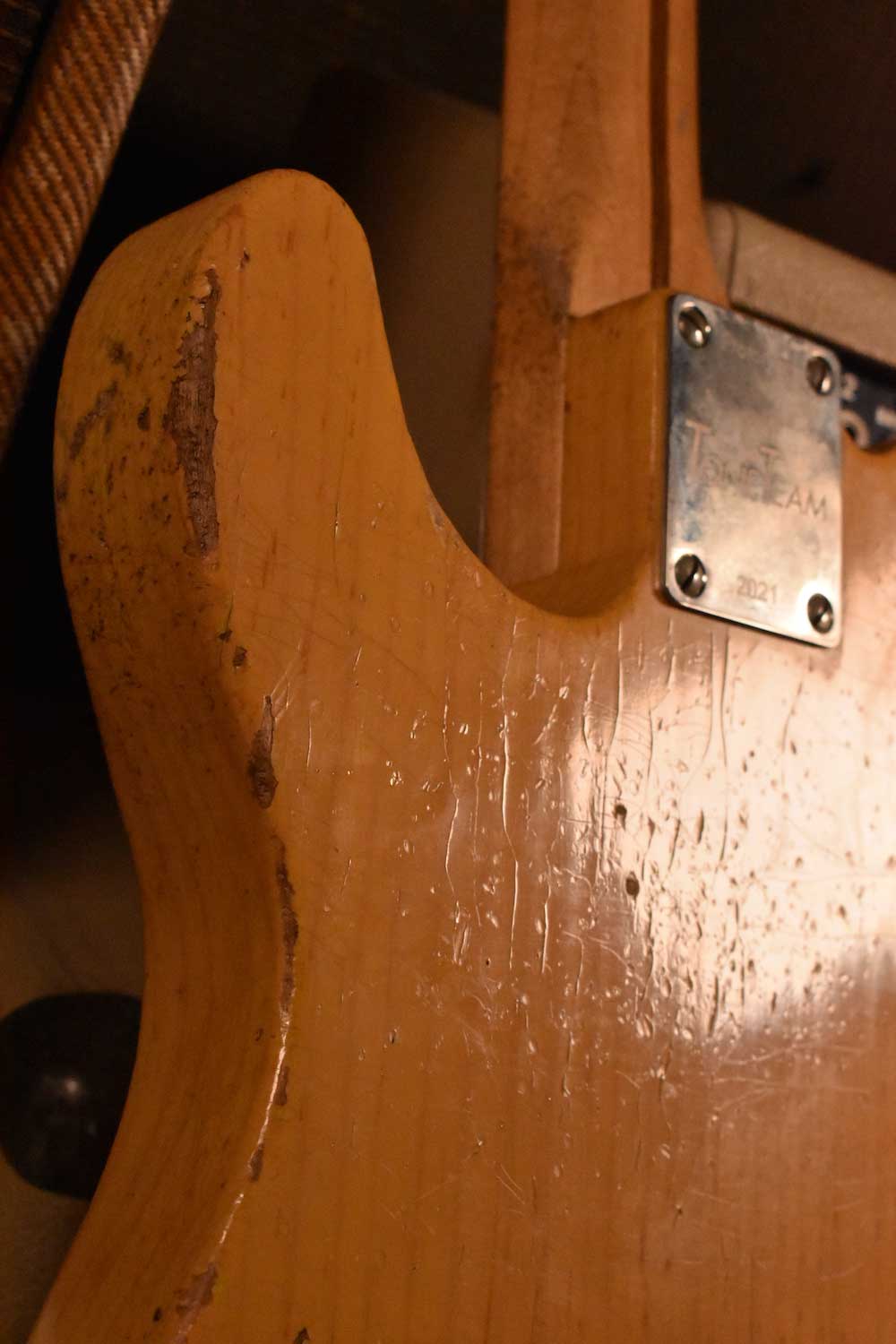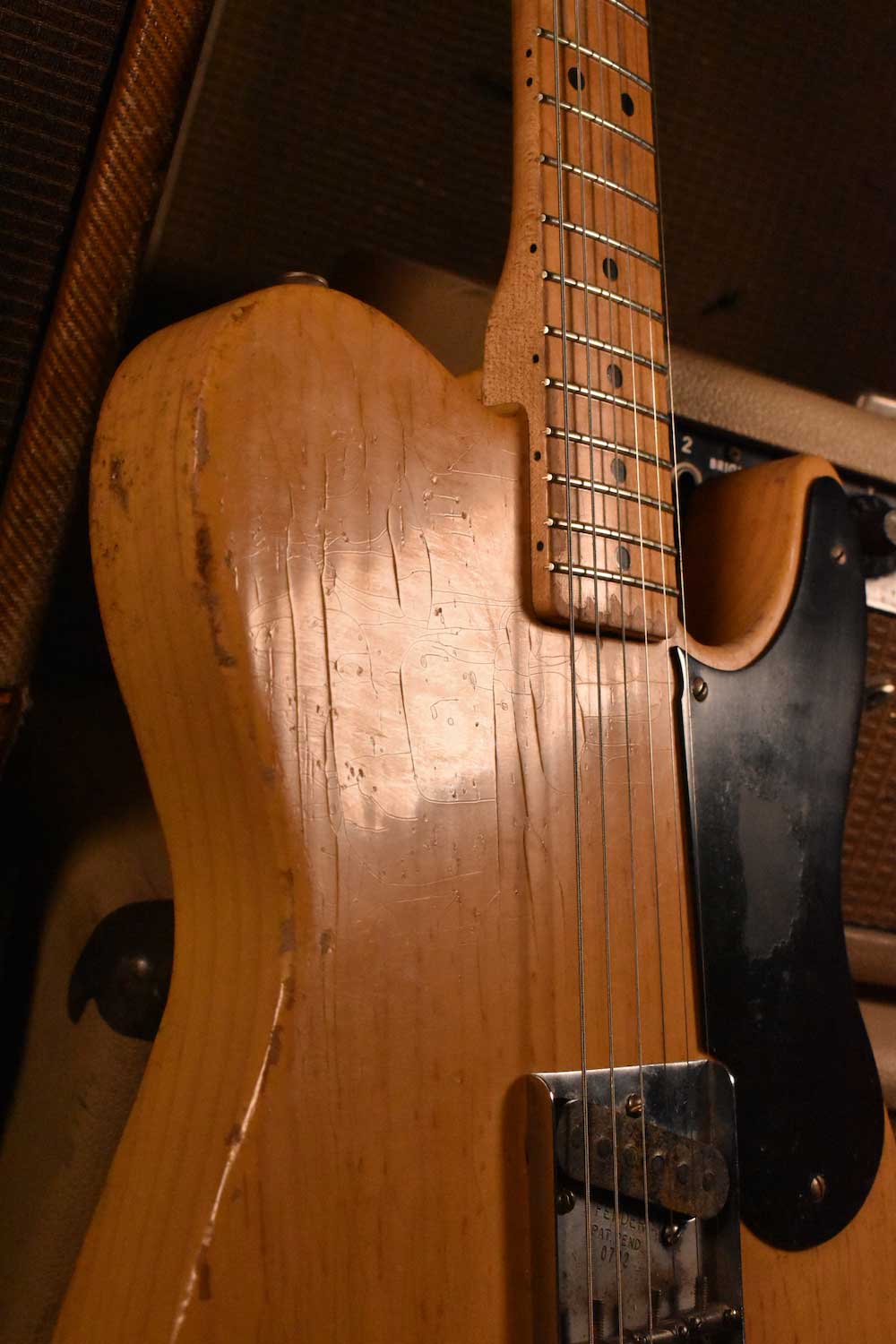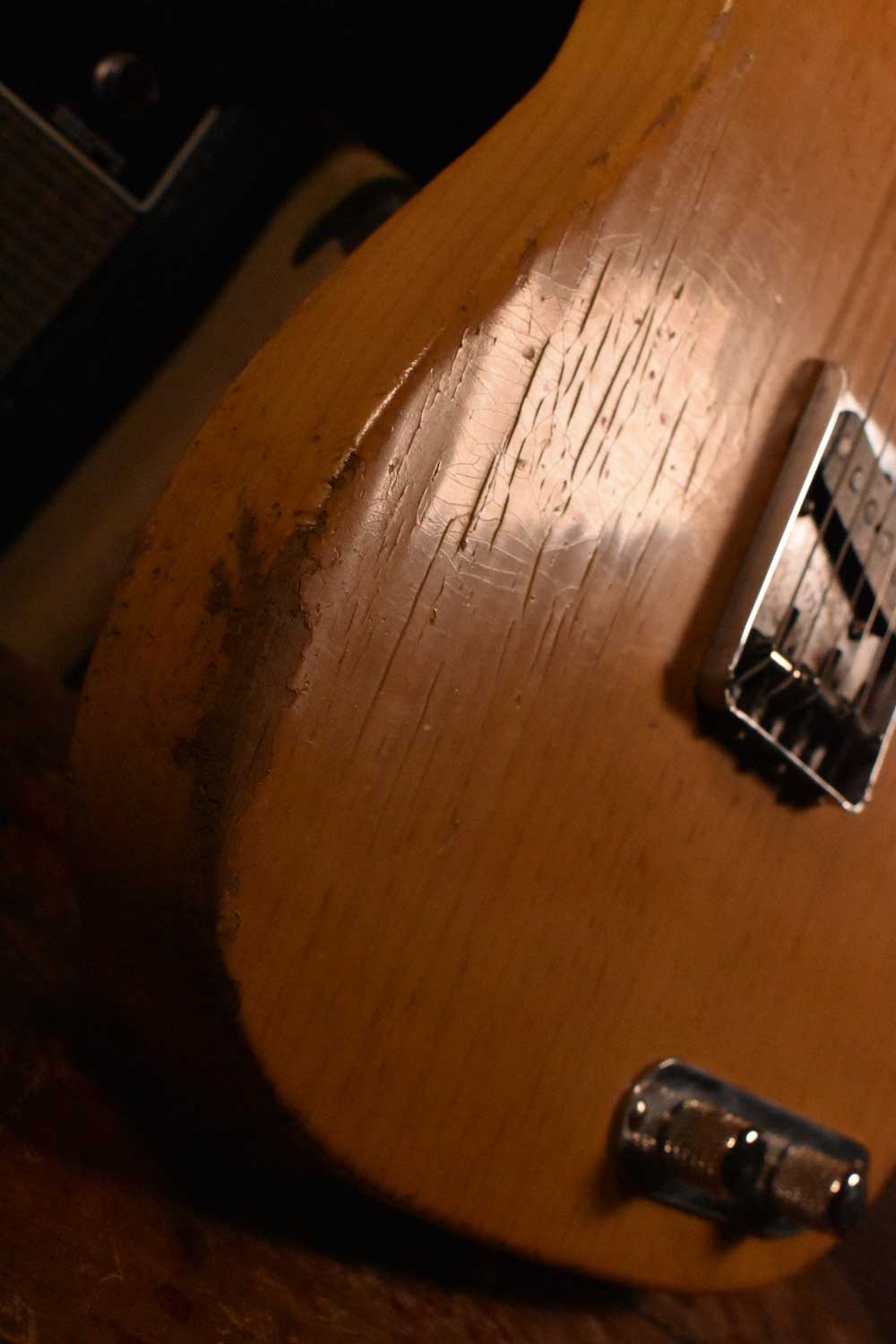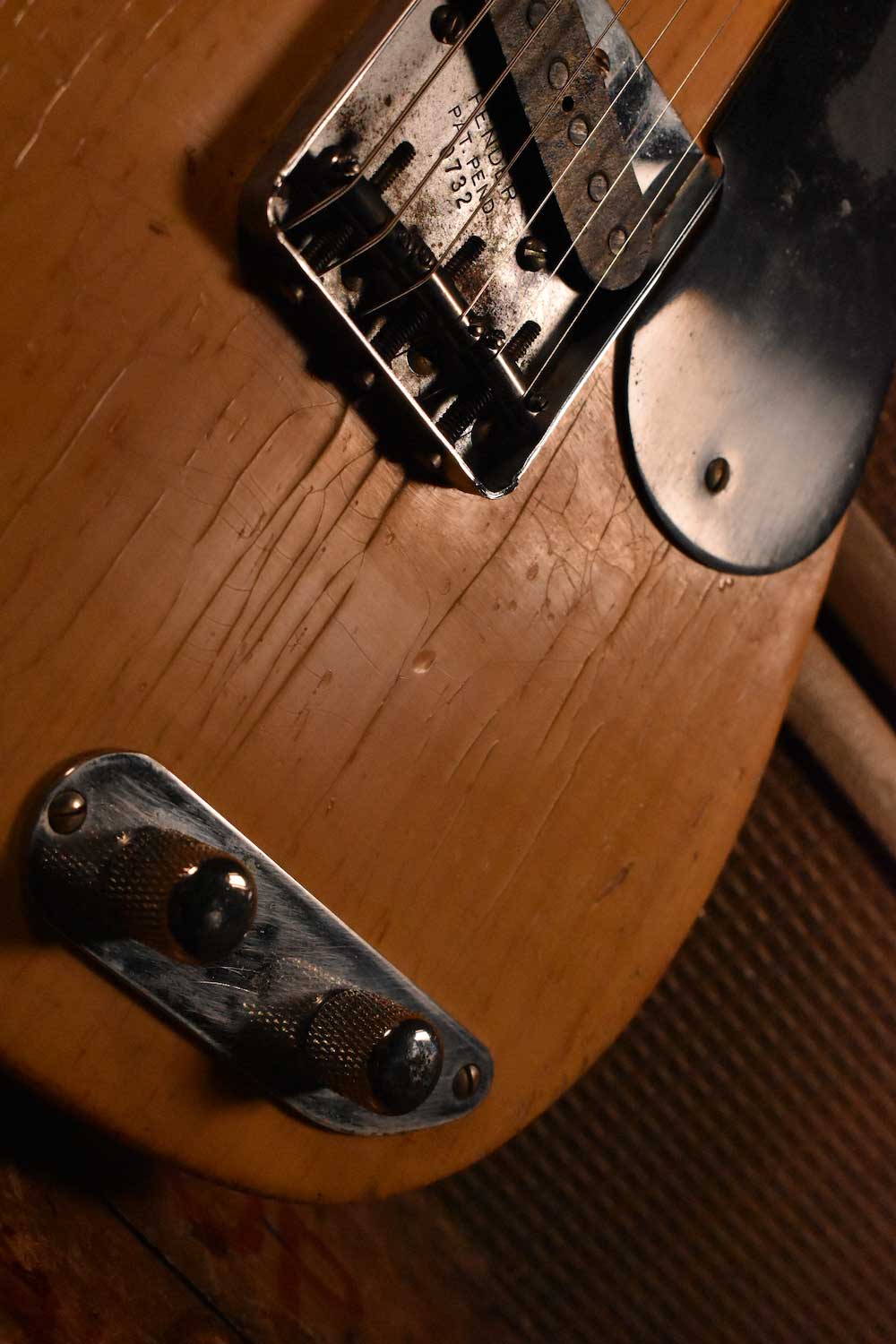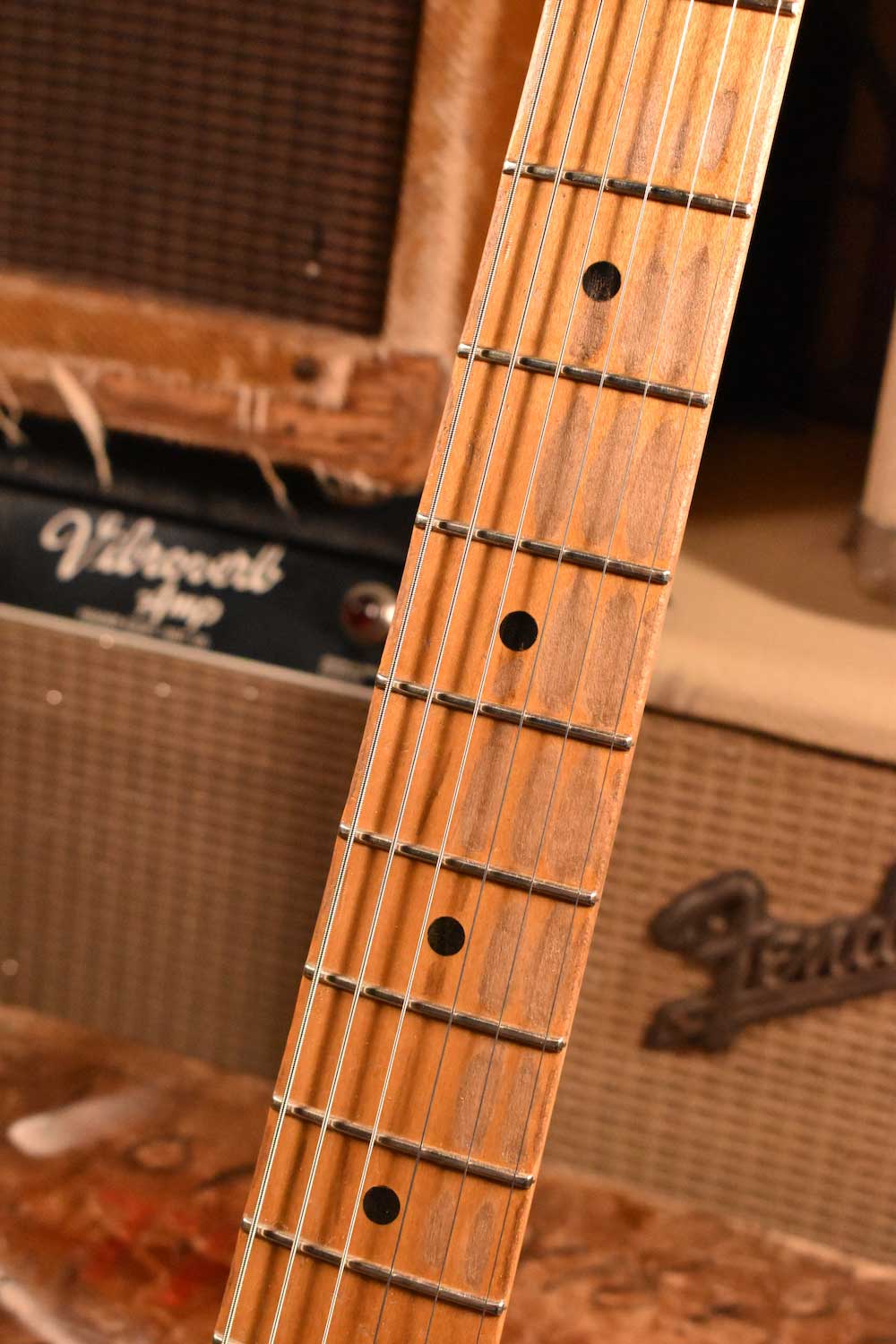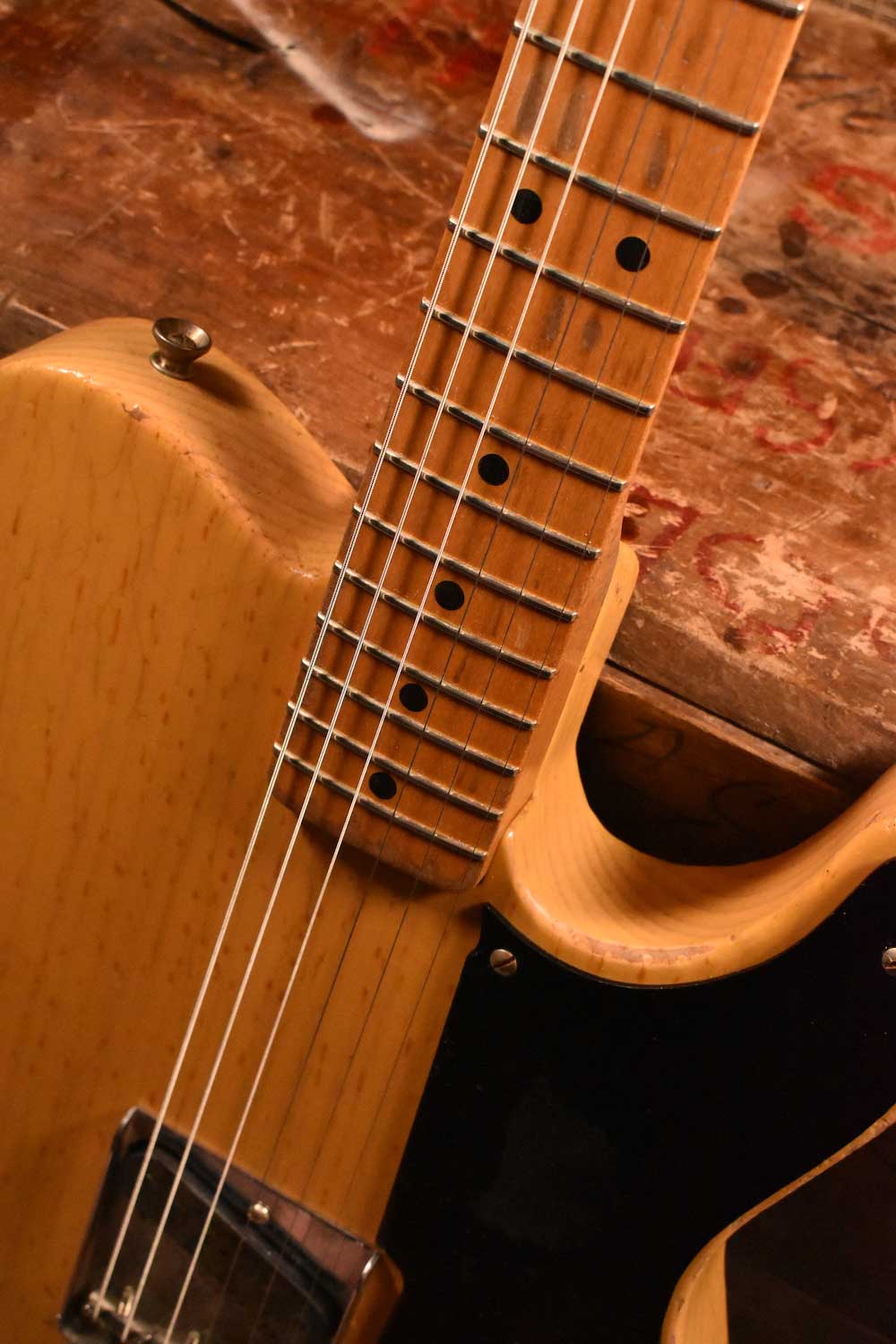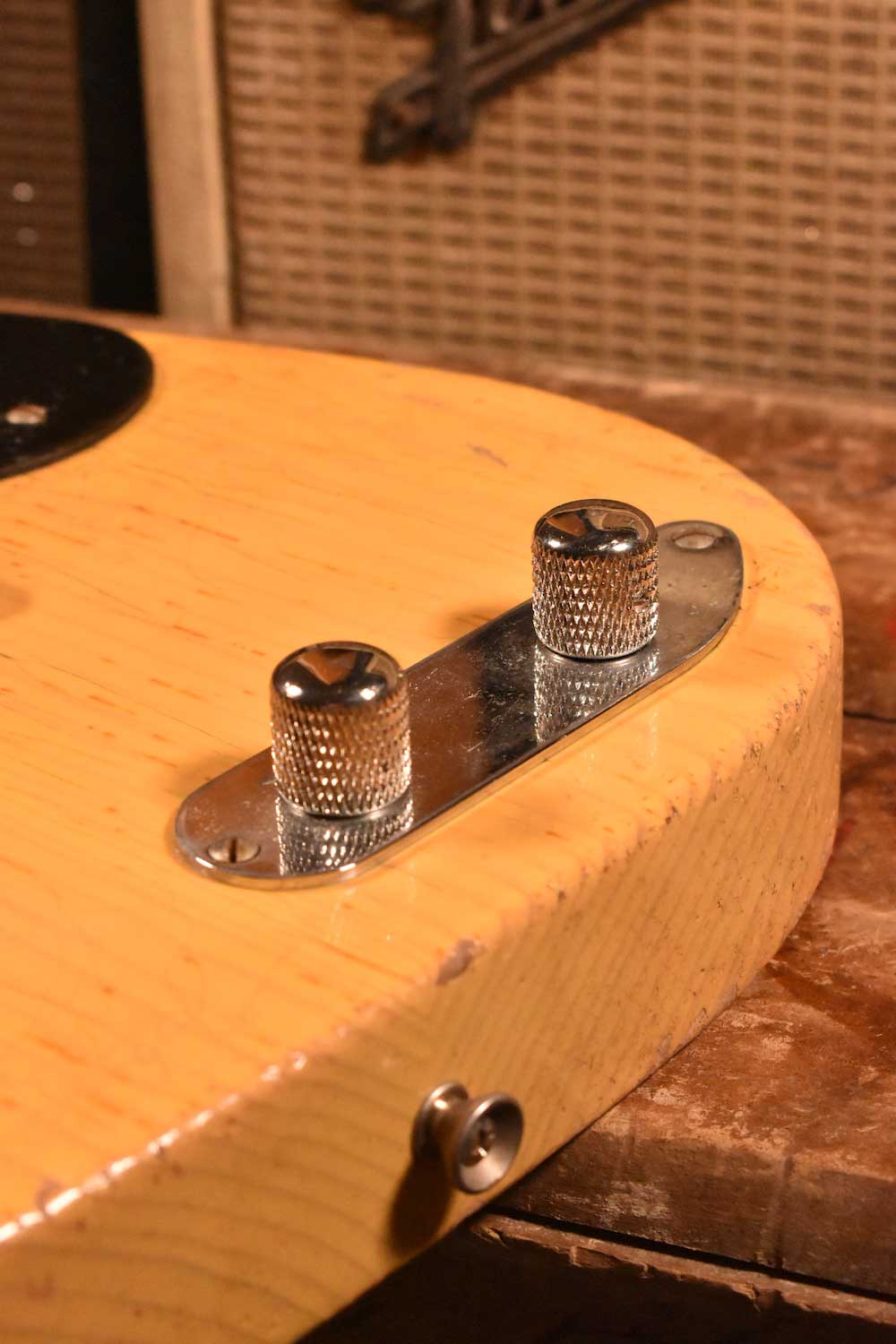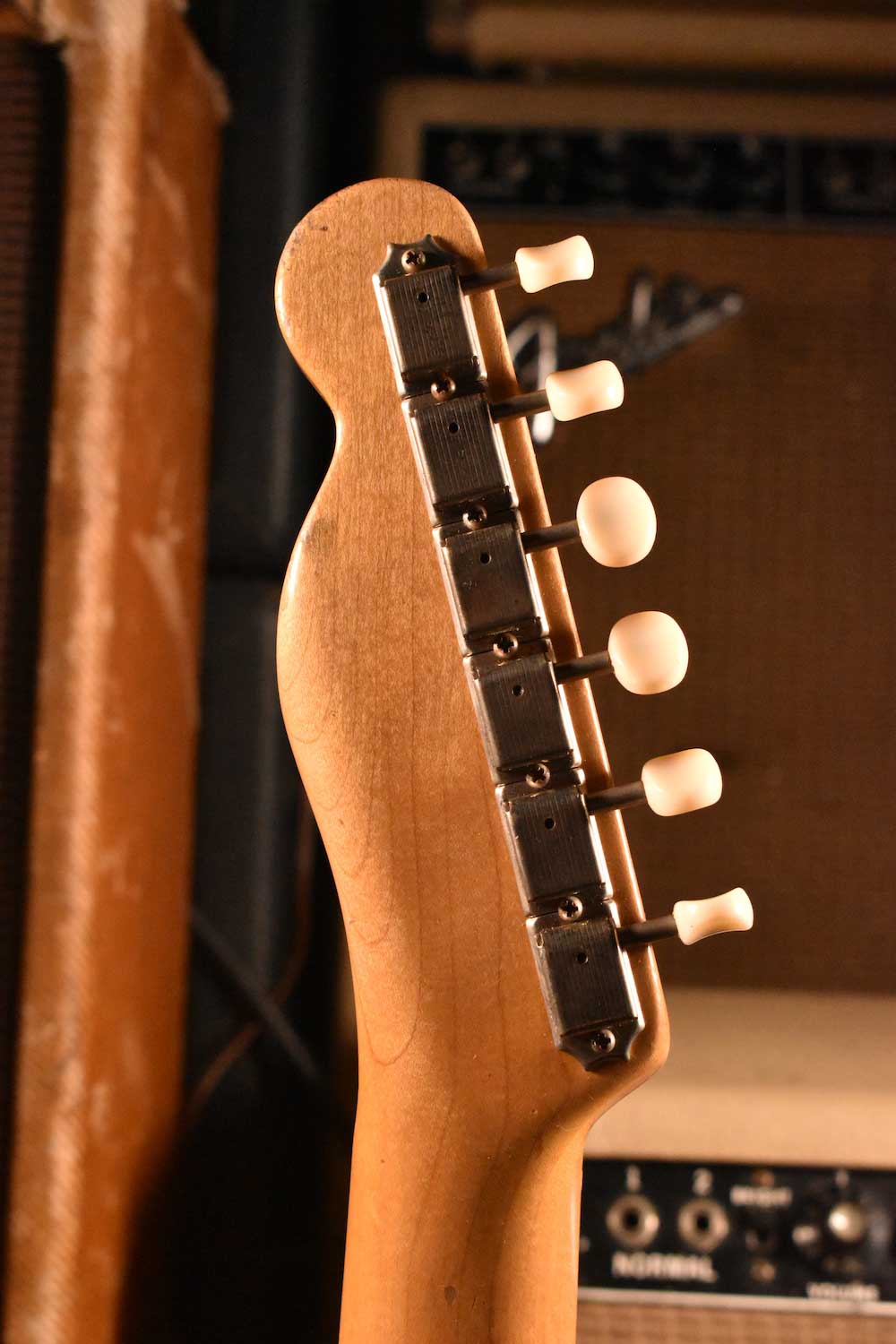

These are the details of a unique guitar, a tribute to one of the earliest prototypes of the Fender Esquire, credited to be the “2nd” while I personally think this had to be the first, given the particular controls position. This one receive a truss-rod neck in 1950, and in those conditions arrived to these days, so it’s safe to assume it was born with a “snake head” neck in 1949.
So, these are the detailed specs of the instrument
- Neck: one piece hard rock maple, with more than 30 years of natural drying; single action truss rod, maple plug at the headstock, walnut stripe on the back, early 50’s “D” shape, fiberboard black dots, medium sized “ToneTeam” frets, aged bone nut. ToneTeam 50’s vintage correct thin nitro finish and accurate, natural feel aging.
- Body: two pieces book matched sugar pine lightweight body, with offset routings for the unique control positions, finished in our ToneTeam 50s thin nitrocellulose lacquer and accurately aged with real weather checking and playing marks.
- Hardware: Fender RI bridge with Glendale “broadcaster” steel saddles, Glendale 50s slotted screws and Glendale custom string ferrules, Rutters “broadcaster” knobs and Rutters pressed in jack cup, Kluson deluxe tuners with plastic buttons as appeared in the original example.
- Electronics: Custom Made 50s Esquire pickup with flat polepieces, push pull unique tone circuit that when engaged leaves the pure tone of the pickup without any filter.
- Accessories: Comes with a beautiful “thermometer” aged tweed case by ToschCase and repro leather strap
All The wood-work has been handcrafted by Luthier Romano Burini, while the amazing finish and aging has been done by Luthier Matteo Rufini. The pickup in this one has been custom built by Romano Burini to the specification of my original Esquire from 1952.
This is a “one-off” guitar that I personally ordered to our Luthiers, as a tribute to one of the most unusual prototypes that Leo made before developing the final details of the Esquire in 1950.

